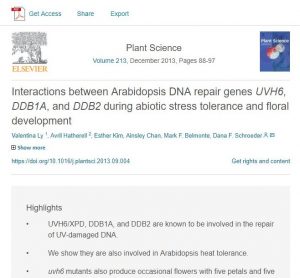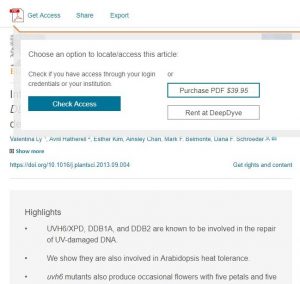As a new Master of Library and Information Studies graduate, I was looking for opportunities to gain more library experience, especially with regard to cataloguing and metadata. An internet search led me to the many intern opportunities available at Smithsonian Libraries. The Digital Content Intern position at the Biodiversity Heritage Library was a perfect fit for me. It was a virtual position, allowing me the flexibility to stay in Toronto, Canada and maintain a full-time job at a hospital. I completed my entire master’s through an online program from a Canadian university while living in Melbourne, Australia, so I was familiar with working at a distance, independently, and using digital mediums to learn and connect with others.

Valentina Ly
For my internship, I worked with Bianca Crowley, the Digital Collections Manager of the Biodiversity Heritage Library. She taught me about the collaboration and coordination that occurs with the international consortium to get the scanned content, how content gets uploaded, and what metadata elements are added to make sure the content is discoverable for users. I was tasked with uploading issues for Földtani közlöny, a Hungarian geological society publication, and the Journal of Agricultural Research. The content from these journals go as far back as 1871 and 1913, respectively, and BHL has made it available.
There’s a lot of work that goes into uploading each journal volume and some volumes can be over a thousand pages long, with each page needing metadata added to it. The 10,870 pages that I uploaded took hours and are just a small drop in the bucket of the total collection, which is still growing! This is a project that deservedly needs a lot of support and manpower.

Screenshot of the Macaw workflow tool used by BHL staff to upload content to and assign metadata for the library.
The process of adding metadata to each page to make it easier for users to find.
Prior to my library degree, I had a career in plant and medical genetics research, so I had access to many articles through my affiliation with universities. All my published genetics research is not easily accessible unless you happen to have a subscription to those journals. Access to information is important to advance scientific research, but subscriptions and pay walls can be a barrier to new knowledge.


An example of the burden of trying to access an article without a subscription. Even authors don’t necessarily have access or rights to their own paper.
As a librarian, providing access to information is an integral part of the profession. It gets even trickier tracking down seminal and older articles published before computers were common tools. The increasing cost of subscriptions to scholarly content is becoming a growing issue, and it is cost prohibitive for academic institutions.
The Biodiversity Heritage Library provides open access to its content, which is a position I can proudly support. Impressively, there are over 145,000 titles and 56 million pages of biodiversity literature available through the Biodiversity Heritage Library! Anyone with an internet connection can immediately access this information and the new full text search of the optical character recognition feature makes it even easier to search.
As a researcher and librarian, I’m glad to have had the opportunity to intern with the Biodiversity Heritage Library. My biggest takeaway from this experience is learning all about this resource and how it freely provides researchers with a wide range of topics and a wealth of information to study and explore.





Hi there – I’m working on a feature for the BBC about digital interns and was hoping I could get a quote from you about your experience for the website?
Dear Deborah,
Thanks for your comment! We assume you mean you’d like to request a quote from Valentina Ly for your feature? If so, please send us an email with your request to feedback@biodiversitylibrary.org so that we can direct your request to the appropriate individuals.
Thanks so much for reaching out!
Best,
Grace Costantino
Outreach and Communication Manager
Biodiversity Heritage Library